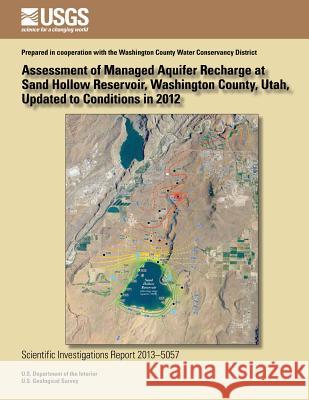Assessment of managed aquifer recharge at Sand Hollow Reservoir, Washington County, Utah, updated to conditions in 2012 » książka
Assessment of managed aquifer recharge at Sand Hollow Reservoir, Washington County, Utah, updated to conditions in 2012
ISBN-13: 9781500275198 / Angielski / Miękka / 2014 / 48 str.
Assessment of managed aquifer recharge at Sand Hollow Reservoir, Washington County, Utah, updated to conditions in 2012
ISBN-13: 9781500275198 / Angielski / Miękka / 2014 / 48 str.
(netto: 67,25 VAT: 5%)
Najniższa cena z 30 dni: 70,23 zł
ok. 16-18 dni roboczych
Bez gwarancji dostawy przed świętami
Darmowa dostawa!
Sand Hollow Reservoir in Washington County, Utah, was completed in March 2002 and is operated primarily for managed aquifer recharge by the Washington County Water Conservancy District. From 2002 through 2011, surface-water diversions of about 199,000 acre-feet to Sand Hollow Reservoir have allowed the reservoir to remain nearly full since 2006. Groundwater levels in monitoring wells near the reservoir rose through 2006 and have fluctuated more recently because of variations in reservoir altitude and nearby pumping from production wells. Between 2004 and 2011, a total of about 19,000 acre-feet of groundwater was withdrawn by these wells for municipal supply. In addition, a total of about 21,000 acre-feet of shallow seepage was captured by French drains adjacent to the North and West Dams and used for municipal supply, irrigation, or returned to the reservoir. From 2002 through 2011, about 106,000 acre-feet of water seeped beneath the reservoir to recharge the underlying Navajo Sandstone aquifer. Water quality was sampled at various monitoring wells in Sand Hollow to evaluate the timing and location of reservoir recharge as it moved through the aquifer. Tracers of reservoir recharge include major and minor dissolved inorganic ions, tritium, dissolved organic carbon, chlorofluorocarbons, sulfur hexafluoride, and noble gases. By 2012, this recharge arrived at four monitoring wells located within about 1,000 feet of the reservoir. Changing geochemical conditions at five other monitoring wells could indicate other processes, such as changing groundwater levels and mobilization of vadose-zone salts, rather than arrival of reservoir recharge.
Zawartość książki może nie spełniać oczekiwań – reklamacje nie obejmują treści, która mogła nie być redakcyjnie ani merytorycznie opracowana.











